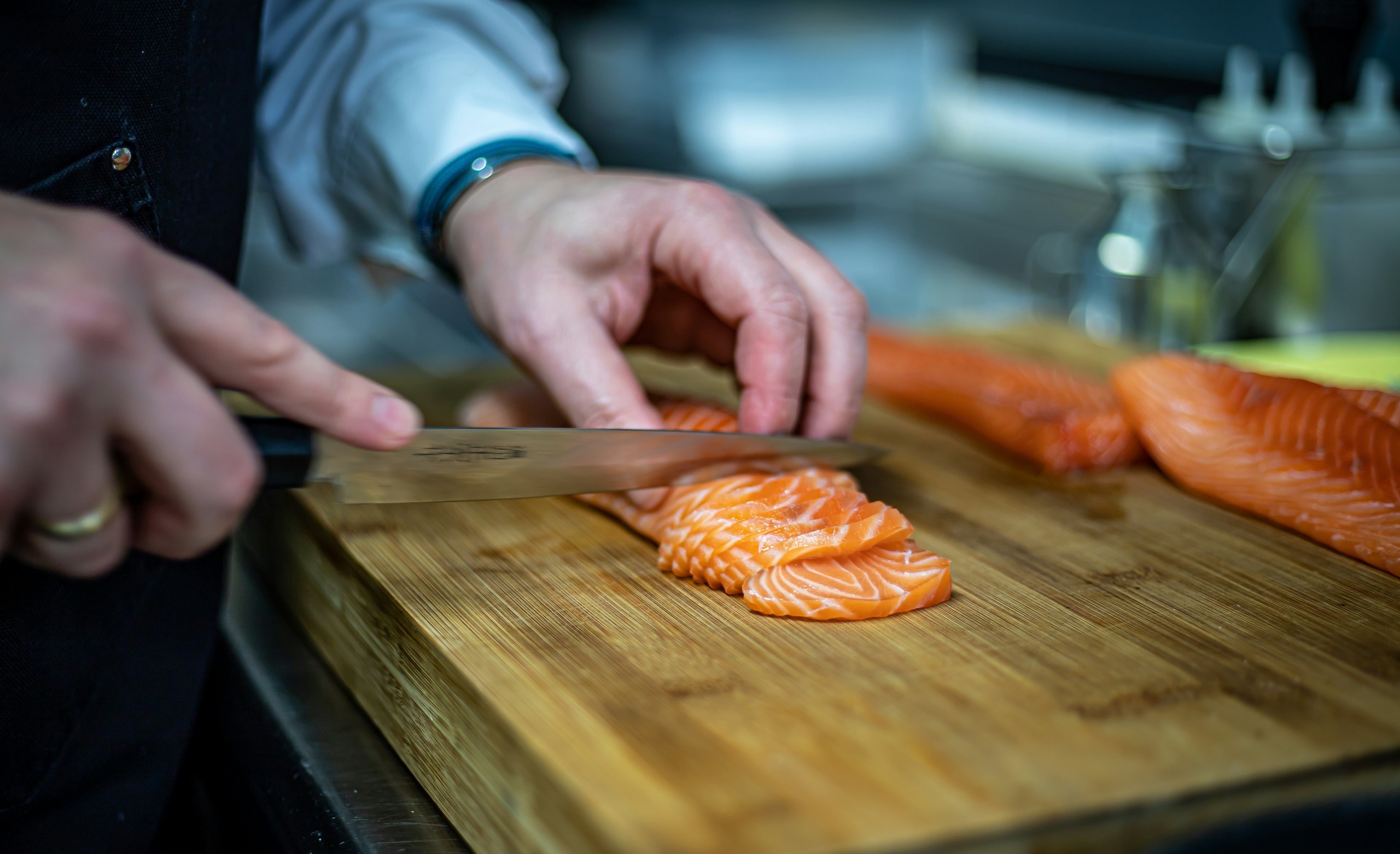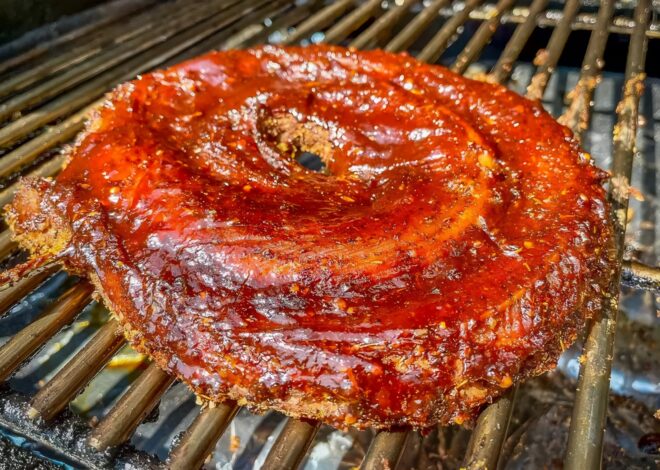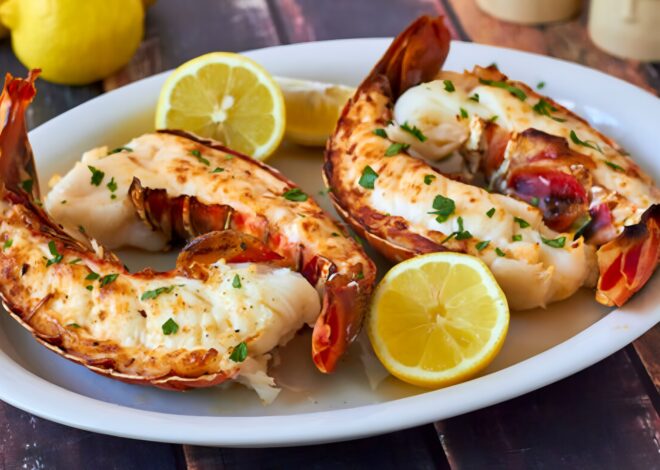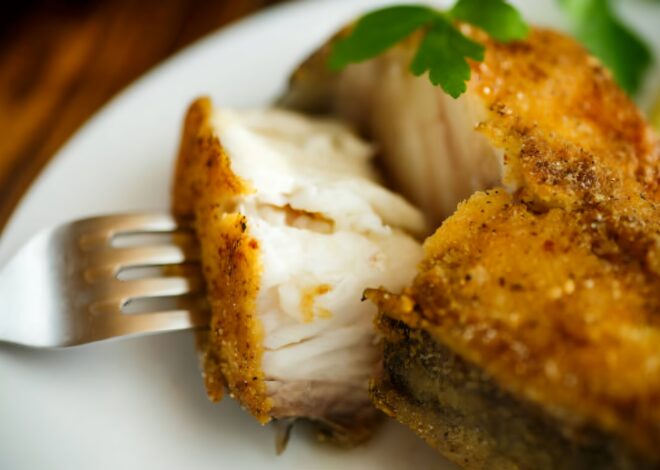
How To Cook Salmon
If you’re wondering how to cook salmon that’s not only delicious but also retains its health benefits, you’ve come to the right place! Salmon is a superstar when it comes to healthy eating. Packed with omega-3 fatty acids and high in protein, it’s not just nutritious but also incredibly versatile.
Whether you’re looking for a quick weeknight dinner or an impressive main course for guests, salmon fits the bill perfectly. Its rich flavor pairs well with various ingredients, making it easy to adapt to your personal taste preferences. Let’s dive into everything you need to know about preparing this exquisite fish at home.
Choosing the Right Type of Salmon: Wild vs. Farmed
When it comes to choosing salmon, the debate between wild and farmed is crucial. Wild salmon typically swims in natural waters, feeding on a diet of smaller fish and marine organisms. This results in a distinct flavor profile that many enthusiasts prefer.
On the other hand, farmed salmon is cultivated in controlled environments. These fish are often fed pellets designed for growth, which can affect their taste and texture. However, they tend to be more readily available and less expensive than their wild counterparts.
Nutrition also varies slightly; wild salmon usually has higher omega-3 fatty acids while being lower in calories compared to farmed options. Your choice may depend on personal preference or specific dietary needs. Consider sourcing from reputable suppliers who prioritize sustainability regardless of your pick!
Preparing the Salmon for Cooking: Tips and Tricks
Preparing salmon for cooking can enhance its flavor and texture. Start by selecting fresh, high-quality fillets. A good piece of salmon should have vibrant color and a pleasant ocean scent. Before cooking, rinse the fish under cold water to remove any residual scales or debris.
Pat it dry with paper towels; this helps achieve a nice sear if you’re pan-searing or grilling. Next, consider marinating your salmon to boost flavor. Simple mixtures of olive oil, lemon juice, garlic, and herbs work wonders. Let it sit for about 30 minutes — no longer than an hour to avoid overwhelming the delicate taste.
Don’t forget to check for pin bones! Run your fingers along the fillet’s surface and use tweezers to pull out any stray bones you find. This will ensure each bite is tender without surprises. With these tips in mind, you’ll set yourself up for a delicious meal ahead.
Different Cooking Methods for Salmon:
Salmon is incredibly versatile, and the cooking method you choose can really elevate its natural flavors. Each method offers unique textures and tastes that make salmon an exciting addition to any dinner table. Try them out to discover your favorite way to enjoy this nutritious fish!
A. Grilling
Grilling salmon is a fantastic way to infuse it with smoky flavors while keeping the fish moist and tender. Start by preheating your grill to medium-high heat, ensuring it’s clean for that perfect sear.
Before grilling, marinate your salmon for at least 30 minutes. A simple mixture of olive oil, lemon juice, garlic, and herbs can elevate its taste significantly.
Place the salmon skin-side down on a lightly oiled grill grate or use a fish basket to prevent sticking. Grill each side for about 4-6 minutes. Look for those beautiful grill marks as an indicator of doneness.
You want the internal temperature to reach around 145°F (63°C). Once done, let it rest briefly before serving; this helps retain its juiciness and flavor in every bite.
B. Baking
Baking salmon is one of the simplest and healthiest cooking methods. It allows the fish to retain its natural moisture while infusing flavors from seasoning or marinades.
Preheat your oven to 375°F (190°C). This temperature ensures a gentle cook, preventing the salmon from drying out. Line a baking sheet with parchment paper for easy cleanup.
Season your fillets with salt, pepper, and your choice of herbs—dill works beautifully! You can also add slices of lemon on top for extra brightness.
Bake for about 15-20 minutes, depending on the thickness of the fillet. The key is to watch for that perfect flakiness; it should easily separate when you poke it with a fork.
For added flair, broil them for an additional minute at the end to get a lovely golden crust on top without overcooking. Enjoy this versatile dish with your favorite sides!
C. Pan-Searing
Pan-searing salmon is a fantastic way to achieve a crispy exterior while keeping the inside tender and moist. Start by selecting your fillet, preferably with skin on for added flavor and texture.
Heat a non-stick skillet over medium-high heat. Add a splash of high-heat oil, like canola or avocado oil. Let it shimmer before placing the salmon in the pan.
Season your fish simply with salt and pepper, then lay it skin-side down. This helps render the fat from the skin, giving you that delightful crunch. Cook undisturbed for about 4-5 minutes until golden brown.
Flip carefully using a spatula to avoid splatter. Continue cooking for another 3-4 minutes depending on thickness. The key is watching for those lovely caramelized edges while ensuring it’s flaky throughout. A squeeze of lemon at finish adds brightness to each bite!
Delicious Salmon Recipes to Try:
When it comes to salmon, the possibilities are endless. Let’s explore some mouthwatering recipes that will elevate your meals. Each recipe highlights salmon’s versatility and showcases its ability to adapt to various culinary styles. Enjoy experimenting!
A. Lemon Garlic Baked Salmon
Lemon Garlic Baked Salmon is a delightful dish that brings out the best in this fish. The combination of zesty lemon and aromatic garlic elevates its natural flavors.
Start with fresh salmon fillets and preheat your oven to 400°F (200°C). Place the fillets on a baking sheet lined with parchment paper for easy cleanup.
Drizzle olive oil over the salmon, then season it generously with salt and pepper. Squeeze fresh lemon juice right onto the fillets, letting it soak in for extra flavor. Mince some garlic cloves and sprinkle them evenly across the top.
For an added touch, toss some thinly sliced lemons around the fish as it bakes. This method infuses even more citrusy goodness into each bite while also looking impressive when served.
Bake for about 12-15 minutes until you see that beautiful flaky texture emerge. Pair it with steamed vegetables or rice for a complete meal!
B. Teriyaki Glazed Grilled Salmon
Teriyaki glazed grilled salmon is a delightful fusion of flavors that elevates this already delicious fish. The sweet and savory teriyaki sauce complements the natural richness of the salmon, creating a dish that’s hard to resist.
Start by marinating your salmon fillets in a mixture of soy sauce, honey, garlic, and ginger. Allow them to soak up those bold flavors for at least 30 minutes. This step ensures every bite bursts with taste.
When it’s time to grill, preheat your grill to medium-high heat. Place the marinated salmon on the grate skin-side down. Cook for about five minutes before flipping it gently. Brush on extra teriyaki glaze while grilling for an added touch of flavor.
Serve with steamed rice and vegetables for a colorful plate that impresses both visually and gastronomically! Each bite will bring you joy as you savor this unique take on cooking salmon.
C. Blackened Salmon Fillets
Blackened salmon fillets offer a bold flavor that can elevate any meal. The key to this dish lies in the spice blend, which typically includes paprika, cayenne pepper, garlic powder, and thyme. This combination creates a smoky crust when seared.
Start by patting your salmon dry with paper towels. Generously coat both sides of the fillet with the spice mix for maximum flavor.
Heat an iron skillet over high heat until it’s scorching hot. Add a bit of oil—preferably something high in smoke point like grapeseed or avocado oil—to ensure a good sear without burning.
Place the seasoned salmon skin-side down into the pan and let it cook undisturbed for about 3-4 minutes. Flip carefully and finish cooking on the other side until it’s perfectly charred yet tender inside.
Serve alongside fresh greens or rice for a delightful contrast to its rich spices.
Tips for Perfectly Cooked Salmon
To achieve perfectly cooked salmon, start with quality fish. Freshness matters immensely, so look for vibrant color and a clean scent. Next, consider the temperature. Allow your salmon to come to room temperature before cooking. This helps it cook evenly throughout.
Season generously but simply. A sprinkle of salt and pepper enhances the natural flavors without overpowering them. When cooking, avoid overcooking. Salmon is best when it’s slightly pink in the center; this keeps it moist and tender. Use a thermometer for precision — aim for an internal temperature of 125°F (51°C) for medium-rare.
Resting is key too! Let your salmon sit for a few minutes after cooking to allow juices to redistribute, ensuring each bite remains juicy and flavorful. Experiment with herbs or marinades beforehand but keep it balanced; you want the taste of salmon to shine through beautifully.
Conclusion: Enjoying Your Perfectly Cooked Salmon Meal
Cooking salmon can be an enjoyable and rewarding experience, especially when you take the time to appreciate its rich flavors and health benefits. With a few tips and techniques under your belt, you can elevate this versatile fish into a delightful meal.
Whether grilled, baked, or pan-seared, there’s no shortage of ways to prepare salmon. Each method brings out unique characteristics in the fish while allowing for creative flavor combinations. From lemon garlic baked salmon that brightens up any dinner table to teriyaki glazed grilled salmon that adds a sweet twist—there’s something for everyone.
Remember to keep an eye on cooking times and use tools like thermometers for precision. A perfectly cooked piece of salmon should flake easily with a fork yet remain moist inside. With these recipes and tips at your fingertips, you’re ready to impress family and friends with your culinary skills. Embrace the deliciousness of perfectly cooked salmon today!



